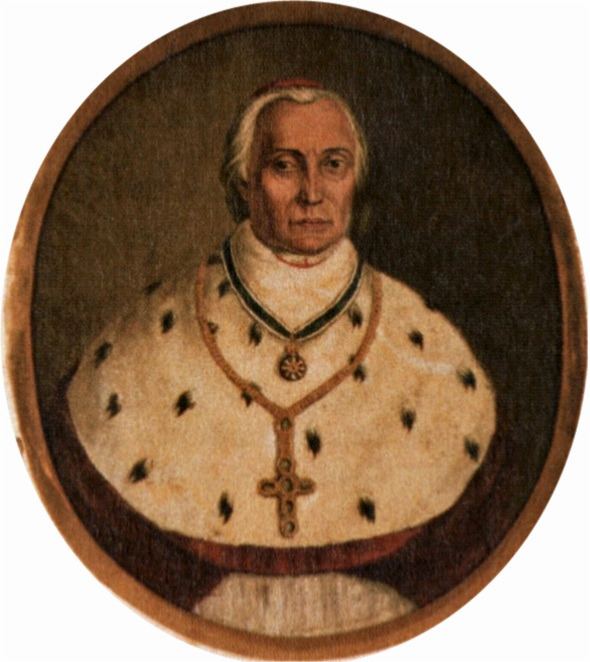Name Gregorius Ziegler | ||
 | ||
Died April 15, 1852, Linz, Austria | ||
Gregorius Thomas Ziegler, bishop of Linz (March 7, 1770 – April 15, 1852), was born at Kirchheim in Schwaben near Augsburg. He joined the Benedictines at Wiblingen Abbey in 1788 and was ordained priest on 25 May 1793. He taught in various Benedictine institutions until he became prior of Wiblingen.
After the dissolution of Wiblingen abbey in 1806 he removed with some of his confreres to Tyniec in Poland and taught theology at the neighbouring University of Cracow. When the Benedictines were forced to leave Tyniec in 1809 he was engaged as professor of church history at the Lyceum of Linz, 1809–15, and of theology at Vienna, 1815-22. On 2 February 1822, he became Bishop of the new diocese of Tyniec, but transferred his see to Tarnów, where he began the erection of a seminary and renovated the cathedral. On April 13, 1827, he was promoted to the diocese of Linz, where he remained until his death.
Although the Church throughout Austria at this date was still dependent to a very great degree on the government in ecclesiastical matters, the bishop knew how to revive and strengthen the ecclesiastical spirit in his clergy and people. Of great importance was the introduction of the Jesuits and their settlement on the Freinberg near Linz, which was accomplished by means of the vigorous and generous aid of Archduke Maximilian of Este, and the foundation of numerous other religious establishments (Franciscans, Salesians, Sisters of Mercy, etc.).
The Revolution of 1848 not only increased political liberty, but also gave to the Church greater independence in its own province. The bishop at once made use of the regained freedom to revive popular missions, which had been discontinued since the reign of Maria Theresa. In 1850 at his instance a ten day's mission was held by the Redemptorists, at which the number of communicants was reckoned at 50,000. In the same year, the diocesan theological institute was placed entirely under episcopal supervision, and an examination of candidates for the position of parish priests was established; in October for the first time examinations were held by prosynodal examiners.
He laboured successfully for the emancipation of the Church from governmental encroachments, fostered the religious life of the clergy and laity by introducing clerical retreats and popular missions, and advanced the religious education of the laity by introducing religious orders. he is the author of Die Feier der heil. Firmung in der Kath. Kirche (Vienna, 1817); Das Kath. Glaubensprincip (Vienna, 1823); Züge und Schilderungern aus dem Leben des sel. Seb. Franz Job (Linz, 1835) and various minor works, pastoral letters, occasional lectures, and sermons. He also re-edited Klypfel's institutiones theologiae dogmaticae (Vienna, 1819–21) and contributed various theological treatises to Jakob Frint's Theologische Zeitschrift (Vienna, 1813–16).
This article incorporates text from a publication now in the public domain: Herbermann, Charles, ed. (1913). "article name needed". Catholic Encyclopedia. New York: Robert Appleton.
